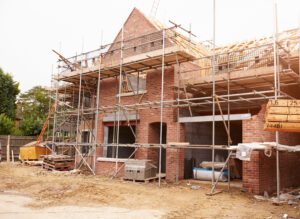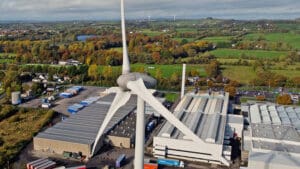As one of the hardest types of businesses to manage, construction businesses have best practices to guide their unique components. Construction contractors manage budgets, schedules, subcontractors, materials, and issues daily.
Here are some best practices for managing a construction business to guide people in the right direction. These practices will keep all stakeholders happy, and maintain profitability.
Build Up Lead Generation Efforts
Lead generation is how you get projects. It should be a primary focus when managing a construction company. Quality leads can be identified through lead generation services. You can also leave your business card around your community and network with architects, commercial realtors, and developers.
Effective Communication with Teams
Communication sometimes must happen quickly and effectively. Make sure your construction company’s messaging is clear and direct. This ensures all stakeholders stay on the same page and realistic expectations are set.
Actively Manage Expectations
Half of all construction projects fail. As you provide progress updates, manage expectations. Ensure builders, clients, and contractors know how a project is progressing. Be realistic and honest.
Hire the Right Team for Your Business
Invest in hiring people who deliver high-level work. From your project manager to accountant and bookkeeper, estimator, purchaser, and other roles, hire the best you can find. This should be either the best in experience and expertise or the best in mind you can train.
You can only do some things yourself. Hiring those you can trust to take responsibility is best practice. Delegate as often as possible, and do not micromanage. Allow team members to act with your support.
Use Construction Accounting Software
Don’t try construction accounting elsewhere. The software cuts down time, improves accuracy, and reduces human error. Construction accounting software can help with all financial management tasks and even automate some to keep you hands-off.
Set Up an Office for Your Business
Once you start to grow, unless the company is just you, you will need an office. A centrally-located office will legitimize you. Clients know where to meet to discuss a project or sign a contract. Ensure you have the space to accommodate workforce growth in the next 1-2 years.
Document and Report
Document your projects carefully and often. Documentation ensures visibility. Reports can be generated and issued to relevant parties, defining project work and stages completed. It creates a trail of knowledge a stakeholder can use to track progress over time.
Look for Cost Savings
Especially as a project progresses and issues develop with materials, workforce, or other factors, ensure you’re always looking for cost savings where possible. Construction accounting software monitors your budget and expenditures and can help identify opportunities.
Divert Waste to Alternative Uses
Divert waste whenever you can. Minimize construction waste by connecting with other companies, initiatives, and organizations that can repurpose materials you no longer need on-site.
Make Available Quality Safety Equipment
Injuries from construction falls increased by 41% from 2011 to 2019, and total non-fatal injuries rose by 8% in the same period. Falls, slips, trips, and accidents happen in construction. To minimize risks, ensure safety equipment is available for all workers and reinforce safety standards.
Drone Usage for Construction
As best practices for managing projects, using drones across a construction site accomplishes four objectives. Surveying the site before work begins reduces the work of a physical site investigation and maps out the land.
Create accurate records of project progress, using live construction updates or captured images for reports. Identify potential hazards on site to prevent accidents. Monitor workers to ensure they comply with safety guidelines.
Automate What You Can
There is a lot of admin work that can be automated. Using apps and software for construction accounting and project management, automation can be applied to estimating, managing customer relationships, generating progress reports, changing orders, handling invoicing and payment requisitions, and more.
Keep Cash Flow Strong
Another key focus of your construction accounting software is cash flow. You can’t build if you can’t pay for materials and labour. Track your business finances to ensure you have the cash to move forward.
Profitability is key to construction businesses. Monitor costs. If your profit margin is 20%, understand what you need to do to maintain or improve this number without taking shortcuts on quality or safety.
Be Strong In Sticking with Your Decisions
Many stakeholders may try to influence construction project outcomes. Scope creep happens. Some may recommend inflation in the budget or schedule. Contractor or safety issues may present. Quality control may reveal problems. Things can happen. Construction businesses must remain quick with decision-making and confident, strong, and assertive in carrying them through.
Read more:
14 Best Practices for Managing a Construction Business















